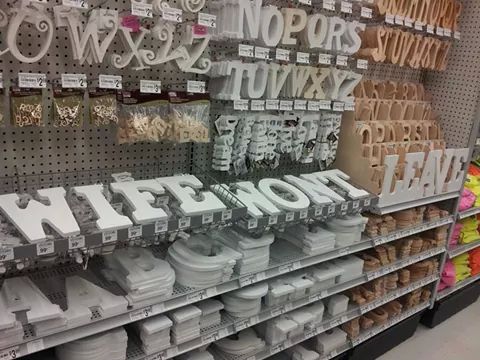-
Posts
1,074 -
Joined
-
Last visited
-
Days Won
1
Content Type
Profiles
Forums
Blogs
Events
Gallery
Store
Posts posted by Junkballer
-
-
2 hours ago, Slegnaac said:
Shades of Fletcher
Except about 300' further.
- fan_since79, Slegnaac, AngelsLakersFan and 1 other
-
 2
2
-
 2
2
-
37 minutes ago, Hubs said:
4/75 will get you literally no-one in the top three tiers. Maybe Syndergaard or Jon Gray or DeScalifini.
Exactly, that is my prediction, that they get someone in that range AND Cobb. I don't see them going high AAV or term. They just drafted/signed 20 pitchers. With Sandoval/Suarez looking promising, they just want to get over the hump and ride Ohtani and another solid starter until then.
39 minutes ago, Hubs said:In regards to Scherzer, I'd give the presumptive NL Cy Young Winner 3/100 33M per with a 1M signing bonus. I'd give him an option for 2025 too at the same rate. He is the guy that isn't aging, and he's been one of the top pitchers in the league for nearly a decade now. Maybe you structure it with deferrals, he is willing to take them as evidenced by his deferrals with the Nationals. Or you go 20/25/35 with a 5M signing bonus and a 15M buyout or 35M option for year four.
And you don't think that a more attractive team (to Scherzer) wont beat that? The Dodgers are just one team of several that will surely top that.
44 minutes ago, Hubs said:Stroman is gonna get 7 years. Ray is likely to get 6. Gausman likely gets 6.
Gray can be had for a 4 year deal. Cobb on a 2 year deal. And Lorenzen/Richards would be minor league or very small one year contracts.
Between Stroman and Gray, I go Gray and the shorter term but would be happy if they got Stroman. Who wouldn't? Pass on Ray & Gausman.
-
I feel strongly that Scherzer is a non-starter for the front office considering his age, price (the article predicts "eclipsing JVs 33m AAV), budget, other needs and because they may want to resign Iglesias. He will have competitive offers from more plausible contenders so I'm just moving on from him, not that the Angels won't make the appropriate noise to placate fans that "they tried".
I would like to see Stroman or Gray, with Cobb (under reasonable terms. While I still think Stroman is still too rich (AAV & term) for the Angels blood, he would give the Angels a legit 1a/1b punch. WIth Stroman or Gray, Cobb is not necessary but it would be fantastic if Sandoval and Suarez were fighting it out for 4/5.
My guess is that the Angels go with someone who can be had in the 4/75 range and re-sign Cobb.
-
-
4 hours ago, True Grich said:
The fact that Scherzer is closing games and Urias is coming in middle relief clearly shows the Dodgers aren't using data based on a 162 game season... So, I don't know what your point is.
2 hours ago, Blarg said:Starting Scherzer wasn't causing the Dodgers to lose last night, it is not as though he blew up and gave up 6 runs.
Buehler has a much better home to away split. My guess is they are thinking he is a stopper for game 3 to change momentum if needed (needed now) and able to pitch game 6 or a deciding game 7 for the win in Atlanta.
You're actually bolstering the point I was trying to make in response to TG's reply to you in that they were using data from the season, (as you pointed to the splits) to make the decision on who to start instead of a "here's where we are at now" type of decision.
-
1 hour ago, True Grich said:
The fact that Scherzer is closing games and Urias is coming in middle relief clearly shows the Dodgers aren't using data based on a 162 game season... So, I don't know what your point is.
Buehler could have pitched with his normal rest last night but for some reason they started Max anyway. Why would you not start your young, rested 1B ace in favor of a 37 y.o. 1A who is showing signs of fatigue, and pitched, not a bullpen, but a live inning 3 days prior? They could still start him games 3 & 6 or 7. There had to be some over-analyzing going on to make that decision.
-
37 minutes ago, True Grich said:
That is always the big question.
It may be the reason why Arte wasn't able to hire the people higher up on the list and went with a first-timer, albeit up and comer with tutelage by a respected GM
-
-
At the press conference:

Actual community:

- Angel Oracle and Tank
-
 2
2
-
6 hours ago, Duren, Duren said:
I still say it was an error. At least an error in judgment.
A tough chance on a hard hit ball, but there were other options. He was at normal or slightly deeper depth, not drawn in. If he moved a foot to the left he knocks down the ball with his body and keeps it in front of him for an infield single. The runner is on third and doesn't score. And he possibly could have thrown out the batter at first if the ball stayed close to his body. He would have had plenty of time. He may even have held the runner on second or thrown him out going to third if the ball was picked up cleanly. He tried a low percentage backhand stab. Granted he had little time to think, and the ball was scorched. But the first instinct should have been to do anything to keep the ball from going to the outfield. The pocket on middle infielders gloves are small and you have to be precise in how you approach a ground ball. With less velocity the ball may have been easier to grab or deflect only a few feet away. So maybe I'll be more forgiving. But if you ask him I bet that he says he should have made the play.
You could've just said that he misplayed the hop. Just sayin'
-
-
6 hours ago, Tank said:
Hey, @St1ck, this you?
That's some Halo 'Roops material right there. Get that man a wrestling belt.
-
I voted Good Player for Marsh but I wouldn't necessarily be disappointed if he was a Solid Player in his sophomore season. I'd be very happy with Adell being a Solid Player next year if that includes a good jump in defense and consistency. His power will fully develop with another 1-2 years under his belt. Still just 23 at the end of spring training.
-
2 hours ago, Angelsjunky said:
Nice post.
I think there's a fallacy here, though, that it is either TTO or smallball. And perhaps a second one, that smallball can't compete (if done well).
For the latter, the case in point is the 2014-15 Royals, which lost a seven game World Series and then won the next, with a very smallball/80s approach, and they didn't have a big base-stealer, just a bunch of guys who could play hit-and-run, and of course their secret weapon, Jarrod Dyson. I'll never forget how they won a WS game by getting a single, pinch-running Dyson, and then him stealing his way to a run. Kendrys Morales led the 2015 team with 22 HR and a .485 SLG. But they knew how to manufacture runs, and had very good pitching, especially their bullpen.
Yes, TTO is what has proven to score more runs over the course of a season, but I think teams have become overly reliant on it, as if there is only one way to succeed. But more to the point, a team can be based in TTO, but still learn a bit of smallball. Or any variation, really, as long as it is done well.
Meaning, I don't think TTO is the problem as much as teams thinking it is the only way, that there aren't other paths to building a good ball team, including hybrid approaches.
For instance, I'd love to see an offense built on OBP and speed. It would score a ton of runs and be a lot of fun to watch.
Oh for sure it's not either/or. If the premise that TTO has become prevalent to the point of making the game less interesting is true, and that is not a universal opinion, then it is in MLB's best interest to improve their product. They don't dislike big HR numbers but they should be concerned with the reduction in on-base action in between those HRs.
My thought is that TTO is, among other things, safer for GM's to build a team around and fans would benefit from them being encouraged through MLB action to seeing the advantages of a more balanced approach.
-
8 minutes ago, AngelsLakersFan said:
Well, MLB has been encouraging homeruns since the 90's at least. People like to blame analytics but at the same time the league has encouraged changes that increased homeruns. The analytics guys just noticed the changes and realized they'd be more successful if they just tried to hit homeruns every time.
Perhaps the law of unintended consequences? MLB thinking that established power hitters would take advantage of the changes and not predicting the 3 true outcome mindset being established in all but the David Fletchers of the world?
-
True that it would be a far lower priority topic, but recognition that 3 true outcome baseball is less captivating would still be discussed. It is recognized by MLB as such and they've been doing experiments in MiLB to address it, not to mention this year's ball "deadening".
-
Maddon's "play like it's 1985" has been thrown into discussions here and there, but how can it be achieved across MLB in an realistic, innocuous way? First, the term may mean other things but I think at its core it refers to the onset of the 3 true outcomes mindset and the subsequent reduction of action on the basepaths, which some find less exciting than the station-to-station, putting the ball in play, manufacturing runs, dare I say smallball approach. While that is subjective, its probably safe to say that there is more protracted tension generated when teams get runners in scoring position and put pressure on the defense than the raw instantaneous excitement of a 2-run blast, as well as being more readily implemented on an at-bat basis by a manager.
On the flip side, outs are extremely precious and it appears obvious that analytics has largely determined that smallball, while providing tension and excitement, doesn't generate runs as compared to the 3 true outcomes mindset. Also, I don't believe MLB is interested in reducing scoring but they should be concerned with how current and potential (attention deprived) fans perceive the game in terms of how it compares to other sports re: continuity of interest.
Whatever MLB did to deaden the ball or increase consistency still netted something like 5,944 HRs this year, more than any year besides 2017 (6105) & 2019 (6778)
So, what are ways that MLB can encourage in-game action with the least impact to runs scored? In the context of this discussion that could mean things like deadening the ball, mound changes, park dimensions, rule changes, strike zone changes, etc. Personally I am in favor of a further slight deadening of the ball and mandating some form of expanding park dimensions by moving fences back and/or raising their height. Also, to offset the runs lost by fewer HRs, a way to increase OBP and putting the ball in play is to shrink and further standardize the strike zone. Fewer HRs and higher OBP should effect more steals and situational hitting.
What say you?
-
I heard he kept referring to Ohtani as "chinito".
-
Because the ghetto board was like taking massive amounts of LSD in a room full of conspiracy theorists.
-
-
-
-
-
.png.994d0bf2808e959b0fc1cd230c27b6eb.png)











Relief Pitching/Bullpen Targets?
in LA Angels | MLB Daily
Posted
Wow, a lot of food for thought here. It's helpful to be reminded that there are other ways of building a competitive club than focusing on names and making them saviors. What came to mind for me was @Angelsjunky's thread (link below) which makes a good companion piece to your post. With value and asset allocation in mind, and remembering that they have a solid #2 in Ohtani (#1 except for innings pitched) I'd rather the Angels obtain a #3 with #2 upside and create a deep formidable bullpen than crazyspend on a #1 at the expense of the bulllpen. I don't know who those bullpen names should be outside of Iglesias, but memories of having a Shields caliber setup man for K-Rod causes me to hope Minasian is up to the task of building that bullpen back end.